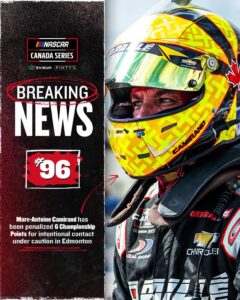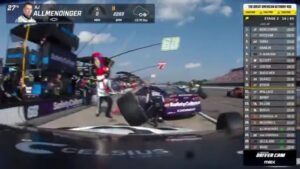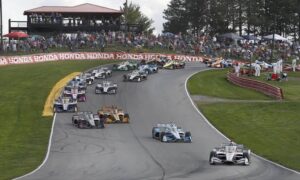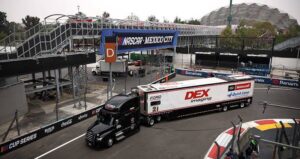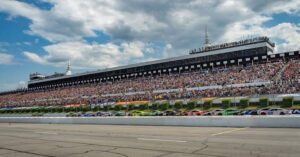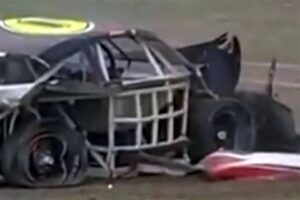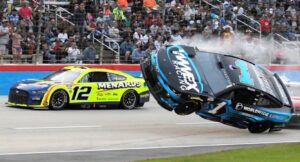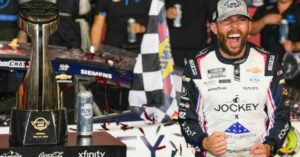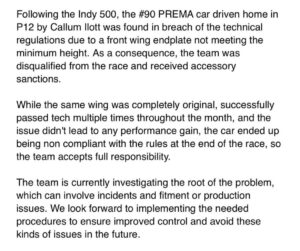The motorsports world is buzzing with reactions to NASCAR’s proposed 2025 rule changes, and not all of them are positive. Among the most vocal critics are Dale Earnhardt Jr. and Denny Hamlin, two of the sport’s most influential voices. Both drivers, known for their candid opinions, have publicly expressed skepticism about the direction NASCAR is taking with these new rules.

The 2025 Rule Changes
While NASCAR has yet to finalize the complete rulebook, the proposed 2025 changes include:
• A revamped points system designed to reward consistency over race wins.
• Mandatory use of hybrid technology in all Cup Series cars.
• Further restrictions on team spending to promote parity across the field.
• Changes to the playoff format, including reducing the number of eligible drivers from 16 to 12.
These adjustments are part of NASCAR’s ongoing effort to modernize the sport, appeal to younger audiences, and address concerns about competition fairness. However, not everyone is on board.
Earnhardt Jr.: ‘It’s Too Much, Too Fast’
Dale Earnhardt Jr., a NASCAR Hall of Famer and current NBC analyst, didn’t hold back in his criticism during a recent podcast episode.
“I get that NASCAR wants to stay ahead of the curve, but this feels like too much, too fast. Hybrid technology? That’s a huge shift for teams and fans to digest. And messing with the points system again? We’ve already had so many changes—fans are just now getting used to the current format.”
Earnhardt Jr. also raised concerns about alienating traditional fans, who have long been the backbone of the sport.
“NASCAR has always been about its roots, about the connection between fans and drivers. If you change too much, you risk losing what makes this sport special.”
Hamlin: ‘Parity at the Cost of Performance’
Denny Hamlin, an active driver and co-owner of 23XI Racing, was equally critical, focusing his ire on the spending caps and hybrid technology mandates.
“The spending cap sounds great on paper, but let’s be real—it’s going to hurt the teams that are already struggling. And hybrid technology? It’s not something fans are asking for. NASCAR’s identity has always been tied to roaring engines and raw horsepower. Why mess with that?”
Hamlin also questioned the fairness of reducing the playoff field, arguing it diminishes opportunities for underdog teams to make a late-season push.
“The playoffs are already intense enough. Cutting it to 12 drivers makes it even harder for smaller teams to compete. It feels like another move that benefits the big teams while pretending to level the playing field.”
Mixed Reactions from Fans
Fans have been quick to weigh in on social media, with opinions divided.
One supporter of Earnhardt Jr. and Hamlin’s stance wrote: “They’re absolutely right! NASCAR keeps changing things, and it’s hard to stay invested when the rules are constantly shifting.”
However, others defended NASCAR’s efforts to evolve. “Hybrid technology is the future, and NASCAR can’t ignore that. These changes might be tough now, but they’re necessary to keep the sport alive,” another fan posted.
NASCAR’s Response
In a press release, NASCAR defended its proposed changes, emphasizing its commitment to innovation and sustainability.
“We understand that change can be challenging, but these adjustments are critical to ensuring NASCAR’s long-term growth and competitiveness. We value feedback from all stakeholders and will continue to engage with teams, drivers, and fans as we finalize these updates.”

The Road Ahead
As NASCAR prepares to finalize its 2025 rulebook, the criticism from figures like Earnhardt Jr. and Hamlin underscores the challenges of balancing tradition with innovation.
The debate also highlights a deeper question facing NASCAR: how to evolve without alienating its core fanbase. With the 2025 season still over a year away, there’s plenty of time for NASCAR to refine its proposals—but it’s clear the road ahead won’t be smooth.
For now, the motorsports world will be watching closely to see how these rule changes develop—and whether NASCAR can strike the right balance between progress and preservation.

















